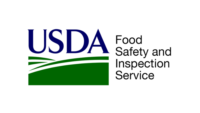The United States Department of Agriculture’s (USDA) Animal and Plant Health Inspection Service (APHIS) developed a publicly available dashboard that displays the results from nation-wide avian influenza virus (AIV) monitoring in wild bird populations.
Wild bird samples are routinely collected by the APHIS’ Wildlife Services (WS) National Wildlife Disease Program and screened for AIV at laboratories that are part of the National Animal Health Laboratory Network. Wild bird H5 and H7 AIVs can spillover into domestic poultry where they can exist as low pathogenic viruses or can mutate to high pathogenicity. High pathogenicity viruses can cause high mortality in poultry and in some wild bird species. All H5 and H7 findings are confirmed at the APHIS National Veterinary Services Laboratories in Ames, Iowa.
The dashboard may be found at https://www.aphis.usda.gov/aphis/maps/animal-health/wild-bird-avian-flu-surveillance
Data presented in the dashboard can identify increased AIV risk and can provide information to poultry producers, wildlife managers, and members of the public on AIV activity in their area.
Information displayed on the dashboard focuses on data collected by the WS National Wildlife Disease Program on multiple types of influenza viruses detected in wild birds under the annual surveillance plan.
https://www.aphis.usda.gov/animal_health/downloads/animal_diseases/ai/2022-23-wild-bird-ai-surveillance-implementation-plan.pdf
Separately, reporting data that includes only Eurasian lineage high pathogenic AIV (HPAI) detections in 2022 and that consolidates information from APHIS and from other collaborators throughout the United States can be found here: https://www.aphis.usda.gov/aphis/ourfocus/animalhealth/animal-disease-information/avian/avian-influenza/hpai-2022/2022-hpai-wild-birds.
Source: USDA's APHIS
.png?1666223298)


Report Abusive Comment